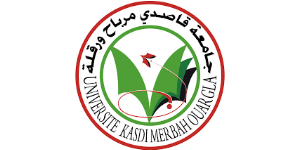Étude Écologique De La Flore Spontanée Du Sahara Septentrional Est-algérien
Résumé: The development of arid areas through the enhancement of their natural potential and the promotion of their socio-economic activities necessarily requires knowledge and the control of their natural resources through surveys at various levels. Many of these investigations constitute a prerequisite for the identification of problems and research to contribute to their solutions according to the spatial and economic characteristics of these environments, our work focused on the floristic study and the soil-vegetation relationship within the spontaneous flora of the northern Sahara in Algerian case of Ouargla, Ghardaïa and Oued Righ areas, represented by 10 stations and 5 biotopes. The botanical and edaphic investigation for 3 years made it possible to inventory 107 taxa belonging to 94 genera grouped in 39 botanical families and 3 classes including Monocotyledons, Dicotyledons and Saccovulates. 23 families are represented by only one gender, representing 21.49% of the total workforce. The best-represented families are Asteraceae with 18 species, Amaranthaceae with 12 species. Poaceae with 11 species, followed by Fabaceae and Brassicaceae with 8 species each, it is noted that 64.48% are annuals and 35.51% of perennial species in the total inventoried. Taking into consideration the different Saharan biotopes in the study regions, it was noted that the greatest total wealth is found in the Oueds Beds with 58 species; then Reg with 49 species, then sandy soils with 30 species, followed by Hamada with 25 species and Sebkha with 15 species. The biological study shows that the Therophytes are the best represented with 44 species, in second place, the Chamephytes with 31 species. The phytogeographic spectrum shows a very high diversity of phytogeographic elements in the study areas. A preponderance of the Sahara-Sindian element, with 42 species. The endemic and Mediterranean elements also occupy the second position with 14 species. The results of the total wealth in the different regions can be classified as very rich in the first position is Ghardaïa region with 72 species, with 27 ephemeral and 45 perennials. In second place comes the Ouargla region with 58 species distributed between 26 perennials and 32 ephemerals. The Oued Righ region ranks third in terms of total wealth, with 56 spontaneous plants distributed between perennials 25 and 32 ephemeral. The values recorded concern the density and recovery rate in the various stations in the regions studied, show that in the Ouargla area, it is at the Oued N'sa station that the density of plant species is highest (18 feet /100 m2). In Ghardaïa’s area, Oued M'Zab station comes first (20 feet /100 m2), while Oued Righ, Reg station has the highest species density (20 feet /100 m2). The highest recovery rate was noted in Ghardaïa at M'Zab's wadi bed (23.55%). In Ouargla region. It is always the wadi beds that represent the highest recovery rate 20.55%. On the other hand, it is the dune data that represent the highest recovery rate (21.38%) in Oued-Righ area. It should be noted that the species Anabasis articulata, Oudneya africana, Euphorbia guyoniana, and Rhanterium adpressum, Oudneya africana, Zilla macroptera and Zilla spinosa dominate in the wadi beds. For sandy soils, Stipagrostis pungens is the most dominant in the Ouargla and Calligonum comosum area, Randonia africana and Tamarix gallica in the Oued Righ area. The Haloxylon scoparium, Rhanterium adpressum species are dominant in the Hamada El-Atchane station in Ghardaïa. The analysis of the sociability index in the different stations shows that in Oued M'Zab, Tamarix articulata and Stipagrostis pungens form troops, and at Oued N'Sa station, Stipagrostis pungens, Limoniastrum guyonianum, Calligonum comosum, and Tamarix articulata also form small groups. In the Ouargla and Oued-Righ region on sandy soils, they are small columns, Sueda fructicosa, Tamraix gallica, and Zygophyllum album, live in small groups. Nevertheless, most of the species sampled live in isolated feet. The distribution of spontaneous flora in this arid area is generally random, but rarely contagious. No species adopt a regular distribution because of the heterogeneity of the environment. The analytical study of the solums of different stations surveyed in the study area indicates that they have a sandy texture. The organic matter content is very low, ranging from 0.15% on the Ghardaïa hamada to 0.95% at Oued M'Zab. The highest limestone content is recorded in the reg station at Oued right (7.35%) and the lowest at erg de sidi khouiled in Ouargla (0.17%). The gypsum content estimate indicates that the soils tested are extremely gypsum, with the highest value recorded at Sebhka d'Oued righ (60.28%) and the lowest at sidi khouiled (17.3%). The nitrogen content is very negligible in the form of traces in all the stations, the different solums analyzed have a slightly alkaline pH, except the Sebkha de Bamendil station which has a very strongly alkaline pH and the Oued M'Zab station which has a neutral pH. Plant associations are not randomly distributed in these arid areas, but according to their ecological affinities, the position of each species depends on a set of ecological factors such as drought, water availability and physico-chemical characteristics of the soil as well as geomorphology, group together halophyte plants linked to salinity, psammophyl plants linked to the fine sands of dunes and plants linked only to rocky and gravelly soils. The relationship that can exist between a plant and soil in this part of the northern Sahara, when water is no longer a limiting factor, shows that the spontaneous flora is distributed in association ranging from a calci-neutrophic flora seeking rocky alluvial soils to a gypso-hygro-halophilic vegetation colonizing sandy and salty soils.
Mots-clès:
Nos services universitaires et académiques
Thèses-Algérie vous propose ses divers services d’édition: mise en page, révision, correction, traduction, analyse du plagiat, ainsi que la réalisation des supports graphiques et de présentation (Slideshows).
Obtenez dès à présent et en toute facilité votre devis gratuit et une estimation de la durée de réalisation et bénéficiez d'une qualité de travail irréprochable et d'un temps de livraison imbattable!


